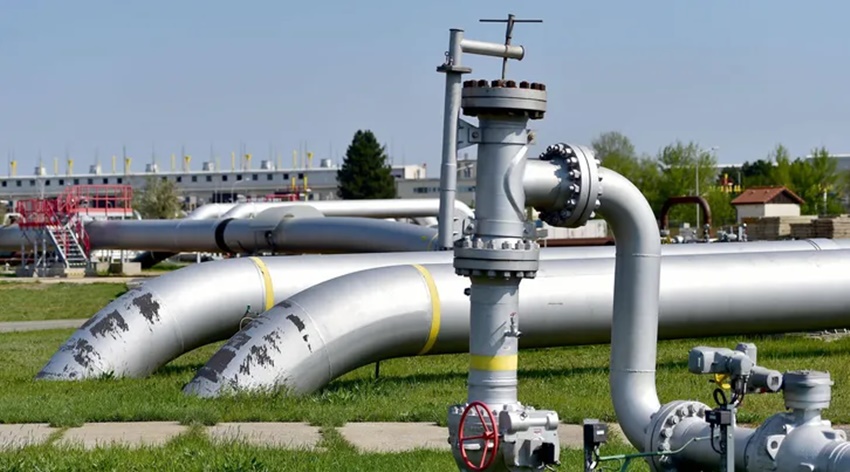Kyiv stops gas transit through Luhansk – Europe affected

Russia’s war against Ukraine is now having an impact on gas transit to Europe. There is already a stop in the Luhansk region. The Ministry of Economy expresses itself.
As of today, Ukraine will stop transiting Russian gas in the Luhansk Oblast in the east of the country due to the war. As a result, up to 32.6 million cubic meters of gas per day were lost – that is almost a third of the maximum amount that can be transported via Ukraine to Europe every day, the Ukrainian gas network operator announced on Tuesday. Due to the Russian occupation, it had become impossible to control the Sochranivka point and the Novopskov compressor station, it said. The operator referred to a case of “force majeure”.
Sokhranivka is part of the Soyuz pipeline, which runs from the Russian region of Orenburg to Uzhhorod in Ukraine. The partial transit stop is to apply from 7 a.m. local time (6 a.m. CEST).
However, according to the Federal Ministry of Economics and Technology, Germany is currently not threatened by any bottlenecks, even if transit is restricted. “The security of supply in Germany is currently still guaranteed,” said a spokeswoman for the German Press Agency in Berlin on Wednesday.
Russia denies allegations
The Ukrainians indicated that the Russians recently disrupted the operation of the plants. Russia’s energy giant Gazprom, which recently pumped almost 100 million cubic meters of gas through Ukraine to Europe every day, said it had received “no confirmation of force majeure.” The Ukrainians have been working “undisturbed” in Sochranivka in recent weeks.
It is technically not possible to route the deliveries that are no longer available directly to the Sudscha point, which is on Russian territory near the border with Ukraine, said spokesman Sergei Kupriyanov, according to the Interfax agency. He initially left it open whether compensation would be possible via completely different routes. Gazprom once again emphasized that it will fulfill all its obligations to European customers.
Most of the gas comes via Nord Stream 1
The contractual maximum capacity for Ukrainian gas transit to Europe is 109 million cubic meters per day. However, the main route for Russian gas to Europe is the Baltic Sea pipeline Nord Stream 1. According to Russian information, 60 billion cubic meters of gas per year ran through Nord Stream 1 to Europe.
Two and a half months after the start of the Russian war of aggression against Ukraine, Moscow announced on Tuesday morning that it had advanced to the administrative borders of Luhansk together with pro-Russian separatists.
The head of the Ukrainian energy supplier Naftogaz, Yuriy Vitrenko, recently warned the editorial network Germany (RND) that the transit of Russian gas through Ukraine to Western Europe could be endangered if Russia were to continue its attacks on the Ukrainian infrastructure.
Germany is heavily dependent on Russian gas. Demands for a gas embargo, for example, are therefore very controversial. According to the latest information from the Economics Ministry, Germany’s dependence on Russian gas has fallen from 55 percent to around 35 percent since the beginning of the war. According to this, a gradual reduction to ten percent of gas consumption is possible by summer 2024.

